This ultimate 3-day Tokyo itinerary for food lovers will take you to the city’s best places to eat! Snack at the different convenience food stalls along Nakamise Street, watch your skewers being grilled right in front of you at the shabby hole-in-the-wall joints along the infamous Piss Alley (the local name for Omoide Yokocho) and try to find the city’s best ramen restaurant along Ramen Street.
This article may contain paid links where we make a small commission for purchases you make from links that you click from this article. By purchasing through our links, you support us at no additional cost. Thank you for your support ❤️. For more details, read the disclosure page.
Experience the unforgettable tuna auction at Toyosu Market and join some of our top-pick food tours guided by local food enthusiasts who know all the best spots.
Tokyo is one of the most exciting foodie destinations in the world, which is one of the many reasons we keep coming back!
What You’ll Get Out Of This Article
This Tokyo itinerary for food lovers includes:
- Everything you need to know about a trip to the tuna auction at Toyosu Market and where to eat in the outer market at Tsukiji Market.
- Insider tips for each foodie travel destination and top attraction on the itinerary.
- Where to eat sections for each day you are in Tokyo, alongside our top hotel recommendation for your trip.
- Epic food tour recommendations in some of Tokyo’s coolest neighborhoods.
- A brief history of Tokyo city and information about each historical site included in the itinerary.
- A handy packing guide that includes everything you should think about bringing with you on your trip to Tokyo.
- Answers to all the most frequently asked questions about a trip to Tokyo.
3 Day Itinerary For Tokyo
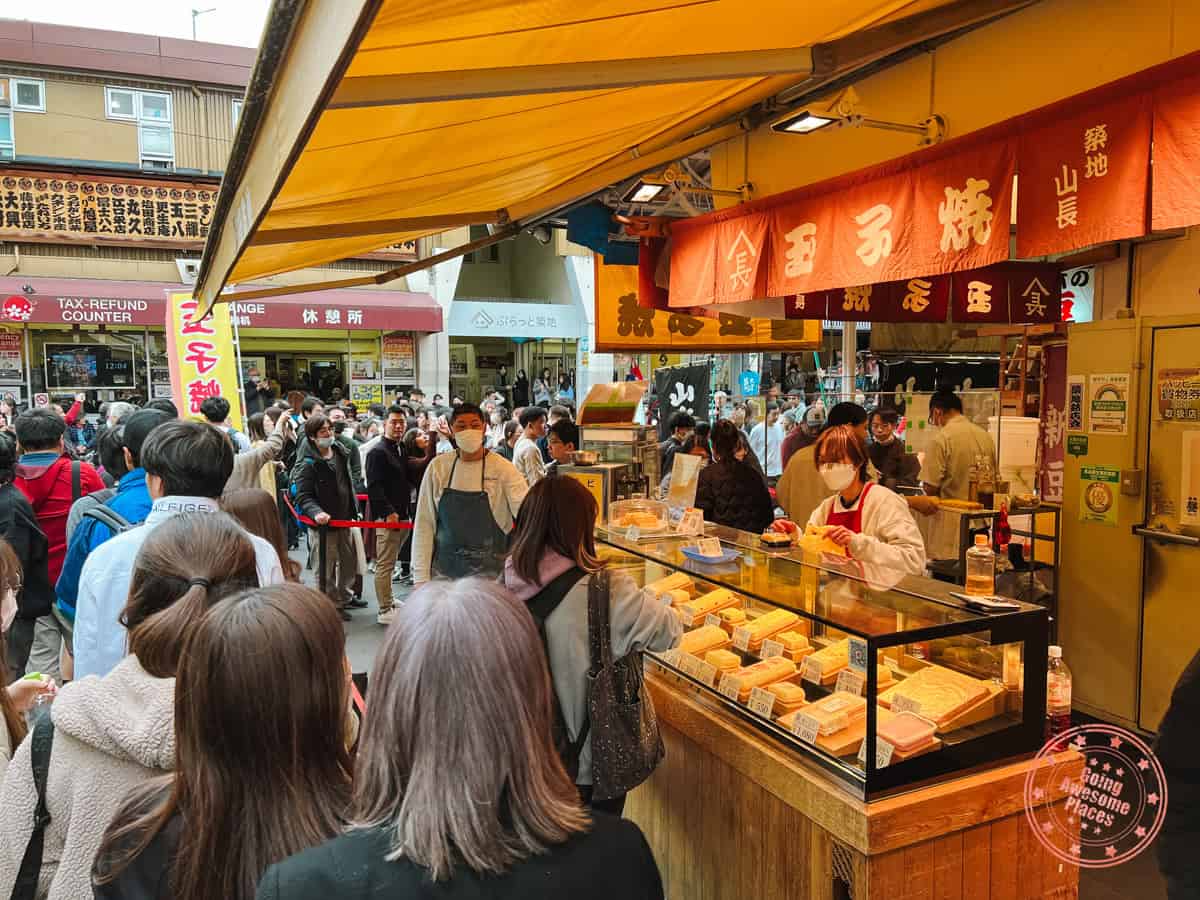
TOP TIPS FOR TRAVELING TO TOKYO
- Where to stay: The Royal Park Hotel is a luxurious hotel in Ginza. It’s a short walk away from the Ginza Station and well-situated for getting to other neighborhoods. We use Booking.com for all of our stays and use the Genius discount to get great deals on our hotel bookings. Alternatively, you can always see if hotel corporate codes might work for you.
- Must pack item: Since this trip consist of eating, like A LOT, you’ll want to bring your own pair of metal chopsticks to cut down on waste, which is always nice!
- Recommended tour: Book this Tsukiji Fish Market Food Tour, where a local will take you around the food stalls of the Tsukiji outer market. It’s a great way to learn all about the market’s history and make sure you don’t miss any of the best food spots!
- Car rentals: Tokyo has great public transport links, so you probably won’t need a car for this itinerary. However, if you do decide to rent a car to explore outside the city, then make sure you know how to save money with car rental coupon codes and always start your search with Discover Cars and RentalCars so you know what the best deals are.
- Flights – If you are flying in from elsewhere, use the Skyscanner “Everywhere” feature to find the best deals from your local airport. Check how much it would be to get to Haneda Airport or Narita Airport!
- Insurance – Not always required but always recommended! Make sure you’re covered with the best travel insurance. Our go-to is always HeyMondo for great coverage at a fair price, also with our link you automatically get 15% off
- Hottest deals – Never be without our frequently updated travel deals page.
Get ready to eat your way through Japan’s capital! Let’s dive into this itinerary that’s packed with awesome food spots and loads of information about Tokyo’s food culture.
📚 Tokyo Food Mini Guide 📚
🏨 Best Hotel – The Royal Park Hotel
🍴Where To Eat – Asakusa Ninja Experience Cafe, Nakaya, Daiwa Sushi, Kakigoya, Tsukiji Koromo Sushi, Ajino-Hamato Tsukiji Honten, Godaime Hanayama Udon Nihonbashi, Harajuku Owl Cafe, Ramen Street
🎟️ Best Places To Visit – Senso-ji Temple, Nakamise Street, Sumida Park, Tokyo Skytree, Toyosu Market, Tsukiji Market, Tokyo Imperial Palace, Kitanomaru Park, Nijubashi Bridge, Meiji Shrine, Piss Alley
⭐️ Must Do Activities – Nakamise Street food tour, tour the Tembo Deck and Tembo Galleria observation decks, Sumo wrestling match while you feast on a chicken hot pot, book this Tsukiji Fish Market Food Tour, Harajuku food tour, Harajuku: Blend of Tradition & Pop Culture for Family Tour, Golden Gai & Kabukicho Izakaya Experience, Shinjuku local bar hopping and food tour, Shinjuku food tour where you’ll eat 13 different dishes
Day 1 – Go On An Extraordinary Food Tour In Asakusa And Explore The Neighborhood

You’ve landed in Tokyo and now you’re ready to start exploring! We’ve prepared the perfect guide for food enthusiasts. You’ll eat all the tastiest local dishes, dive into the local food culture, and visit some of Tokyo’s coolest attractions along the way.
Check into your hotel, drop off your bags, and get ready for an epic day eating your way through one of Tokyo’s most vibrant neighborhoods.
To kickstart your time in Tokyo, we’ve planned a day in one of Tokyo’s best-preserved historical areas, Asakusa. It is a quieter and more peaceful atmosphere than some of the city’s busier areas, so it’s a nice place to explore after a long journey to Japan.
Asakusa is home to the Senso-ji Temple, which is Tokyo’s oldest temple, and the main reason people visit the area. On one side of the temple, there’s a gate that leads you along a 200-meter-long shopping street called Nakamise Street. This little shopping alley has been there since the 17th century and it’s a great place to pick up souvenirs.
To make your trip a foodie’s dream, we suggest doing the temple in reverse and starting at Nakamise Street. As you wander through the souvenir stalls, you’ll come to lots of different food stalls selling all sorts of sweet treats and tasty snacks!
Fill up on different snacks for breakfast, like age-manju which is famous in the Asakusa neighborhood. These delicious fried batter balls stuffed with sweet red bean paste will wake your taste buds up. Next, try kibi-dango, a millet flour cake that is extra yummy with a cup of warm sake in the winter or cool green tea in the summer. The best way to make sure you don’t miss any of the best stalls is to join this Nakamise Street food tour.
Fill up on different street food as you wander towards the temple, then walk through the Hozomon gate that is in front of the temple. This ancient Buddhist temple was built in 645 and legend has it that two brothers fished a statue of the Goddess Kannon, out of the nearby Sumida River. They threw the statue back in again and again, but they kept catching it on their fishing lines. So they set out to build a temple in the goddess’ honor.
Attached to the temple, there’s a 5-story high pagoda, which is the star of the show!
WHAT YOU NEED TO KNOW
- Address: 2-chōme-3-1 Asakusa, Taito City, Tokyo 111-0032, Japan
- Hours: The temple grounds are always open, but the main hall is only open from 6 AM to 5 PM each day.
- Price: Admission fee by donation.
- Tips: Try at least one snack you haven’t seen before when you’re wandering along Nakamise Street, you never know what new and exciting flavors you might discover!
- How to Get There: Hop on the Ginza Line at Ginza Station, which is around the corner from your hotel to Asakusa Station. From there it’s less than a 5-minute walk to the temple.
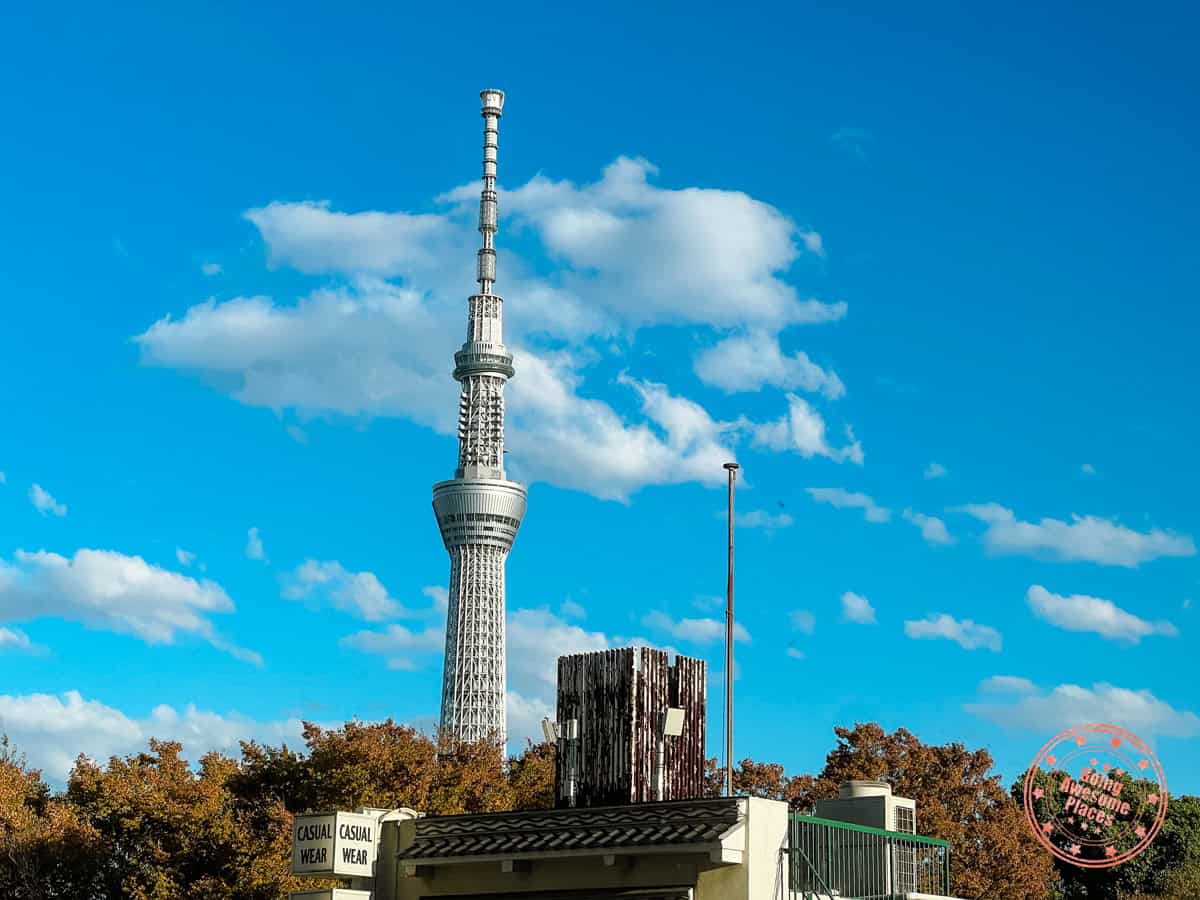
Once you’re finished at Senso-ji, walk to the Asakusa Ninja Experience Cafe just 7 minutes away. You can try on ninja costumes, train in sword fighting, and try out some ninja-themed food! It’s such a cool place to eat, it even made it onto our Ultimate 3-Day Tokyo Itinerary for Families.
Next, wander through Sumida Park, over the Sumida River Walk Bridge to the Tokyo Skytree. This giant television broadcasting tower is a whopping 634 meters tall and has two observation decks you can visit in the tower. The views are so good that they made it onto our Where to Find the Best Observation Deck in Tokyo guide.
You can get tickets to the Tembo Deck and Tembo Galleria observation decks here! Remember to bring along your selfie sticks and camera, it’s an awesome spot to snap holiday pics.
WHAT YOU NEED TO KNOW
- Address: 1 Chome-1-2 Oshiage, Sumida City, Tokyo 131-0045, Japan.
- Hours: The Tokyo Skytree is open from 10 AM to 10 PM every day of the week. Admission closes an hour before closing time.
- Price: The price to visit both observatories is 3500 yen on weekdays and 3800 yen on weekends and holidays.
- Tips: If you reserve your ticket in advance on their website, you can save a few hundred yen on your tickets!
- How to get there: Stroll over the Sumida River Walk Bridge from the Senso-ji Temple, and you’ll soon come to the Tokyo Skytree. It takes about 20 minutes to walk from one to the other, but it’s a nice stroll through Sumida Park to get there, so the walk goes quickly.
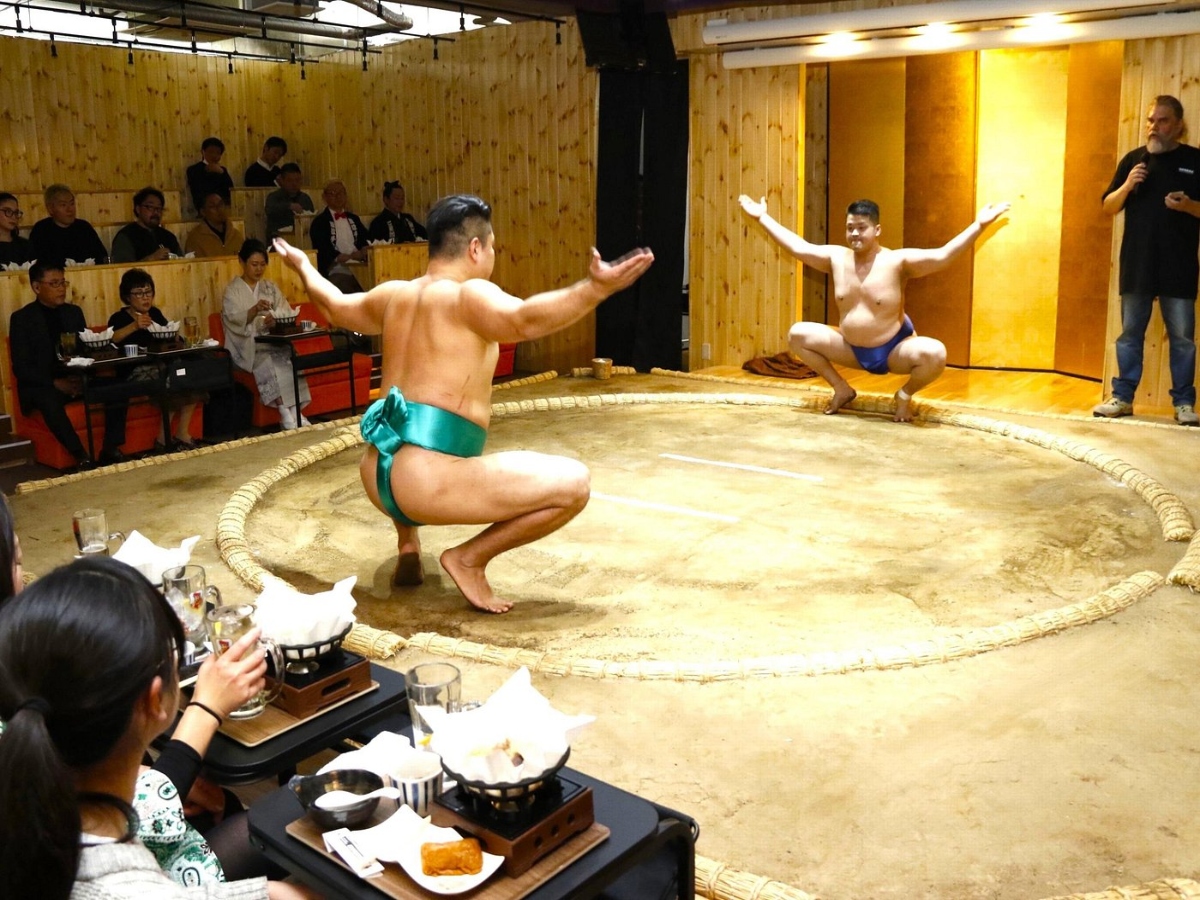 Image via Viator.com
Image via Viator.comAfter soaking in the awesome cityscape views, you’re probably starting to get hungry again. Let’s get back to the most important part of today – food!
This unusual Sumo wrestling match with a delicious pot of chankonabe (chicken hot pot) is one of the most fun food-themed things we did in Japan! You get to watch a live sumo match at the same time as feasting on a delicious chicken hot pot and other Japanese dishes prepared by former sumo wrestlers. The food was great, and watching the sumo match at the same time made it even better.
We know some of you might not have flown into the city until later in the day, so if you arrived on a later flight, skip visiting the Tokyo Skytree and book yourself straight onto this quirky food tour.
Day 2 – Visit The Toyosu Fish Market And Eat At The Stalls Around The Old Tsukiji Fish Market

The Toyosu Market replaced what used to be the Tsukiji Market. While you might have thought this was a bad thing, the new market’s impressive scale and the awesome auctions won’t leave you disappointed.
Any foodie needs to see the Toyosu Market and witness the tuna auctions, which we thought was an awesome cultural experience and offered loads of insight into the Japanese seafood industry. When the auctions were held at Tsukiji there were lots of complaints about the hectic queues and frantic crowds. So when they built Toyosu Market, they designed it to make it easier for onlookers to see the market, without everyone stepping on each other’s toes.
Once you’re there, there are a few different spots you can watch the auction from. There are the Observation Windows that have a great view of the auction from above, but the downside is that there’s a thick glass window between you and the auction, so it’s really hard to hear what’s going on below.
Below the Observation Windows, there’s the Observation Deck – our favorite viewing spot! Because you’re closer to the actual auction, it felt more authentic and was closer to the experience than we had of the auction when it was held at the Tsukiji Market. To access the Observation Deck, you’ll need to navigate their slightly strange lottery ticket system. But don’t worry, our How to Apply to Toyosu Fish Market Tuna Auction has everything you need to know!
If you’re not a morning person, you’ll be disappointed to hear that the market opens at 5 AM, when they start laying everything out on the huge market floor. The tuna auction itself starts at about 5:45 AM, and it’s done by 7 AM, but we promise you it is worth getting out of bed for!
Make sure you get an early night the day before and bring a strong coffee with you. That said, if you’re anything like me, you’ll find that you wake up ridiculously early on your first morning in Japan. Make the most of your jet lag by going to the market on your first full morning in Tokyo.
Once you’ve seen the market, head to the Fish Intermediate Wholesale Market Building. That’s where you’ll find the Toyosu Gourmet, where all the main restaurants are. Start the day like any foodie should, eating at Nakaya. We ate here and loved it. The restaurant is all about chirashi, which is slices of sashimi on a rice bowl. The fish was so fresh, and the uni (sea urchin) was insanely good. Just a heads up, the staff aren’t the friendliest.

Now, if you’re a die-hard sushi fan and you’re willing to put in a little extra effort to get your hands on the best sushi in town, you should have breakfast at Daiwa Sushi. You can make a reservation in advance on their website, or you might be queuing for ages to get a spot.
WHAT YOU NEED TO KNOW
- Address: 6-chōme-6-1 Toyosu, Koto City, Tokyo 135-0061, Japan
- Hours: The auction runs between about 5:45 AM and 7 AM. Get there as early as you can! After that, you can go for breakfast at one of the market’s restaurants.
- Price: There isn’t an entrance fee to the market. We found the most expensive thing about a trip to Toyosu market is getting a cab there in the morning. You can find out more in our How to Apply to Toyosu Fish Market Tuna Auction guide.
- Tips: For directions, read our Toyosu Fish Market Guide – Is It Worth It and What You Need to Know. There are 11 tips in there that will help you make the most of your visit, and it includes loads of advice on everything you need to know before you go so you don’t miss out on anything!
- Getting There: Unfortunately, the Toyosu Market is fairly out of the way. If you’re getting there by public transport, it’s a two-step process. You’ll need to hop on the Tokyo Metro on the Yarakucho line to Toyosu Station. From there, transfer to the Shijo-Mae Station, which is just one stop away on the Yurikamome waterfront line. Make your life easier and get a Suica card ahead of time; you can pick it up at the airport. The problem is that not all lines run as early as 5 AM, but don’t worry – I cover that in the How to Apply to Toyosu Fish Market Tuna Auction guide, where you can find out what cab service we booked and how it cost us to get there.
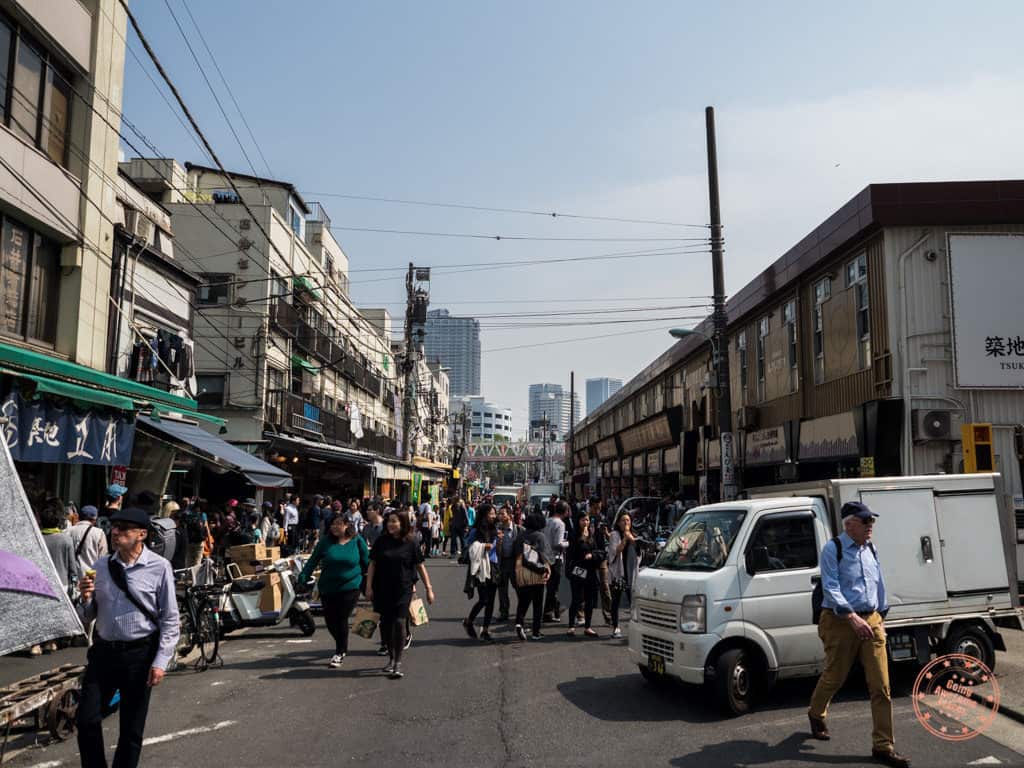
Afterwards, make your way to the Tsukiji Market. The old market is in the neighborhood of Ginza, which is a great place to come if you’re hoping to try Japan’s craziest dishes.
Although the wholesale area of the market, which was famous for its giant tuna auctions, was moved to Toyosu, there are still loads of food stalls worth checking out.
What is known as the outer market is still there. It’s made up of a few blocks lined with food stalls and down-to-earth, local restaurants. It’s the place to go if you want to submerge yourself in Japan’s food culture.
They get their fresh fish each morning from Toyosu, so the quality is amazing! We loved the idea that what we were eating for lunch just a few hours later had been bought at the fish market we had just left.
Because there are many quirky seafood dishes you need to try, and there are so many stalls to choose from, we suggest eating smaller dishes at a few different stalls to make the most of your trip to Tsukiji Market.
Kick lunch off with some grilled scallops and fresh oysters that melt in your mouth at Kakigoya. Then pick between the 18 different types of kaisendon (seaweed bowls) at Tsukiji Koromo Sushi restaurant.
Finish off at one of the outer market’s oldest stalls, Ajino-Hamato Tsukiji Honten. The store has been around for more than 80 years, and they have some seriously peculiar dishes. Don’t leave without trying their satsuma-age, a deep-fried mix of minced fish and vegetables. Their squid dumplings are good too!
If you’re like us and you like learning all about the best food spots, and you’d like some local insight into the history of the market and Japan’s food culture, then book this Tsukiji Fish Market Food Tour!
WHAT YOU NEED TO KNOW
- Address: 4-14-2, Tsukiji, Chuo 104-0045 Tokyo Prefecture
- Hours: The outer market opens early in the morning, and the food stalls stay open until around 2 PM to 3 PM.
- Price: Walking around the outer market is free.
- Tips: Don’t fill up at the first food stall you see! There are loads of stalls in the outer market, and they all have something unique on their menu.
- Getting there: Luckily, the public transport routes will be running normally by the time you finish at the Toyosu Market. It doesn’t take too long to get from Toyosu to Tsukiji’s outer market, just 20 minutes. Walk to the Shijo-Mae Station, less than 10 minutes from Toyosu, then catch the 01 bus towards Shimbashi Station. Get out at Tsukiji-Rokuchome, and from there the market is a 4-minute walk away.

Since you’re in the Ginza area, it makes sense to visit the Tokyo Imperial Palace next. It is a 30-minute walk away, and you won’t get there much faster using public transport, so we suggest walking and enjoying exploring the area along the way.
Built on the site of an older Edo Castle, the Palace is surrounded by moats and protective stone walls. It’s still the residence of Japan’s Imperial family (they even make public appearances here just after New Year), so you can only go into the palace grounds on guided tours at certain times.
The park surrounding the palace is a highlight in itself. Whilst some sections are closed to tourists, you can visit the Kitanomaru Park and areas of the East Gardens. For the best views and photos of the Imperial Palace from afar, head to Nijubashi Bridge.
Once you’re finished exploring, wander over to Godaime Hanayama Udon Nihonbashi for dinner! They serve awesome Himokawa udon noodles, which are famous for being super wide and chewy. The combination of the huge noodles and the mouth-watering broths they make is why there is almost always a line outside this restaurant!
The restaurant is a short 10-minute walk away from Tokyo Station, so it’s an easy and convenient place to get home from.
WHAT YOU NEED TO KNOW
- Address: 1-1 Chiyoda, Chiyoda City, Tokyo 100-8111, Japan
- Hours: The palace and gardens have separate opening hours. As a general rule, the gardens are open from 9 AM to 4 PM, but the closing hours change depending on the month. Check out the opening hours for the dates you’ll be in Tokyo here. The palace itself also has an unusual schedule. It’s open to visitors from 9 AM to 11:15 AM, then it opens again later in the day from 1:30 PM to 2:45 PM. The palace is closed on Sundays and Mondays.
- Price: Visiting the park and palace is free.
- Tips: The palace offers free guided tours in Japanese and English, which we recommend you join; either book it in advance online or register for a tour on the day. Registering in advance is a fairly tricky process, so we recommend checking the tour schedule and showing up on the day.
- Getting there: It takes 30 minutes to get from Tsukiji’s outer market to the Imperial Palace. It’s not much quicker by public transport, and you’ll still need to do a fair bit of walking, so we suggest going on foot.
Day 2 Summary
What you’ll see and do:
- Get up early in the morning and catch the incredible tuna auction at Toyosu Market.
- Head to Ginza and immerse yourself in Japanese food culture at the down-to-earth food stalls in the outer market of Tsukiji Market.
- Visit the Tokyo Imperial Palace and walk around the palace’s stunning gardens.
Where you’ll eat:
- Breakfast: Try the uni at Nakaya. Their chirashi bowls are super delicious and a welcome treat after getting up at 4 AM to catch the tuna auction. Alternatively, reserve in advance and try some of the city’s best sushi at Daiwa Sushi.
- Lunch: Start with oysters and scallops at Kakigoya, then grab a seaweed bowl at Koromo Sushi before finishing off with some more peculiar dishes at Ajino-Hamato Tsukiji Honten.
- Dinner: Try the famously wide udon noodles that have everyone coming back for seconds at Godaime Hanayama Udon Nihonbashi.
Where you’ll stay:
- Our pick of The Royal Park Hotel is within walking distance of the Tsukiji Fish Market, a real plus if you want to get the freshest sushi early in the morning.
- If you want to check out more awesome hotels in Tokyo and read about the city’s coolest neighborhoods, read our Tokyo Neighborhood Guide – Where You Should Visit and Why.
Day 3 – Whizz Around Harajuku And Shinjuku Hitting All The Best Food Spots
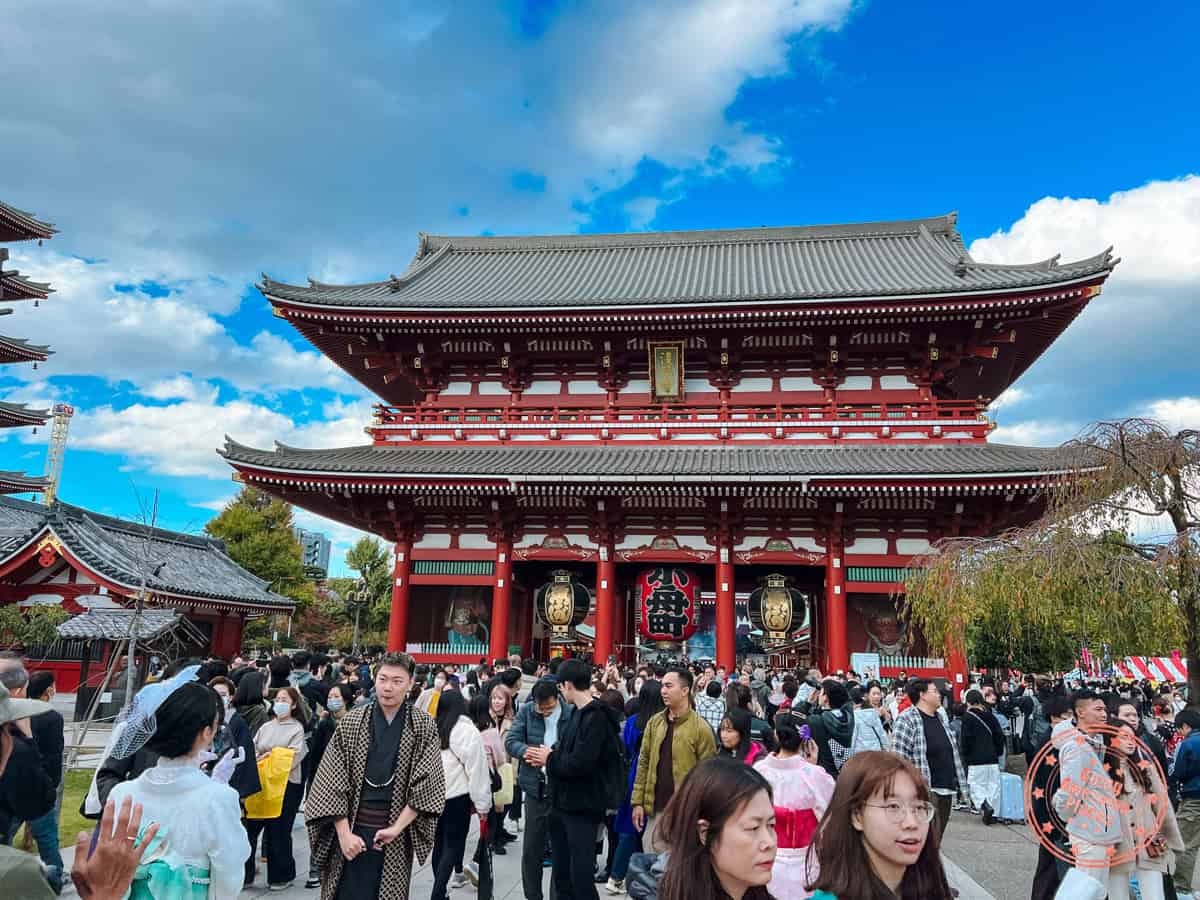
Wake up as early as you can on your third day in Tokyo because there’s a lot to squeeze in today!
Japan is famous for its temples, so it won’t come as a surprise that there’s one on today’s schedule! Meiji Shrine was built in 1920 to pay tribute to Emperor Meiji and Empress Shoken, who are considered to be amongst Japan’s most influential leaders. Sadly, the original structure was destroyed during the Second World War so the shrine you see today was built in 1958.
There’s a big torii gate at the entrance to the complex, and the shrine is surrounded by a forest of more than 100,000 trees. It’s a tranquil place to start the day before we head into the bustling streets of Harajuku and Shibuya to all the best food spots!
After visiting the shrine, wander out of the park and walk another 5 minutes to the Harajuku Owl Cafe, where you can have a cup of coffee in the city’s most unique cafes. In between taking bites of their cafe snacks, hang out with the majestic owls and mighty falcons that live there. If you want to learn some Japanese so you can order your coffee like a local, check out our guide on using the Rosetta Stone Japanese phone app to learn the language.
This awesome Harajuku food tour, tailored to kids, also visits the Meiji Shrine and Owl Cafe. Harajuku seems to be packed with animal cafes, so we’ve also found this tour designed for families, which blends pop culture and tradition. You’ll get to visit the breathtaking Meiji Shrine and finish the day at an animal cafe that has micropigs! It’s so cool and made it onto our Ultimate 3-Day Tokyo Itinerary for Families.
WHAT YOU NEED TO KNOW
- Address: 1-1 Yoyogikamizonochō, Shibuya, Tokyo 151-8557, Japan
- Hours: Meiji Shrine opens with the sunrise and closes with the sunset.
- Price: Free! Admission to the Meiji Shrine is also free, although the museum in the precinct has a small fee if you want to visit it.
- Tips: There’s an area of the shrine where you can write your wishes on a piece of paper or block of wood, which is a fun tradition to join in on. If you want your wishes to come true, you have to put some coins into the offering box, bow twice, clap your hands twice, make the wish quietly, and then bow once more!
- How to get there: Tokyo has great public transport links, so you can use the metro lines to reach the shrine. Less than a 10-minute walk from your hotel, there’s the Tsukijishijo Station. Hop on the Oedo Line towards Daimon and ride for about 20 minutes to the Yoyogi Station. From there, the shrine is a short 10-minute walk away. You’ll need a Suica card, but they’re easy to get and you can use it throughout your time in Tokyo.
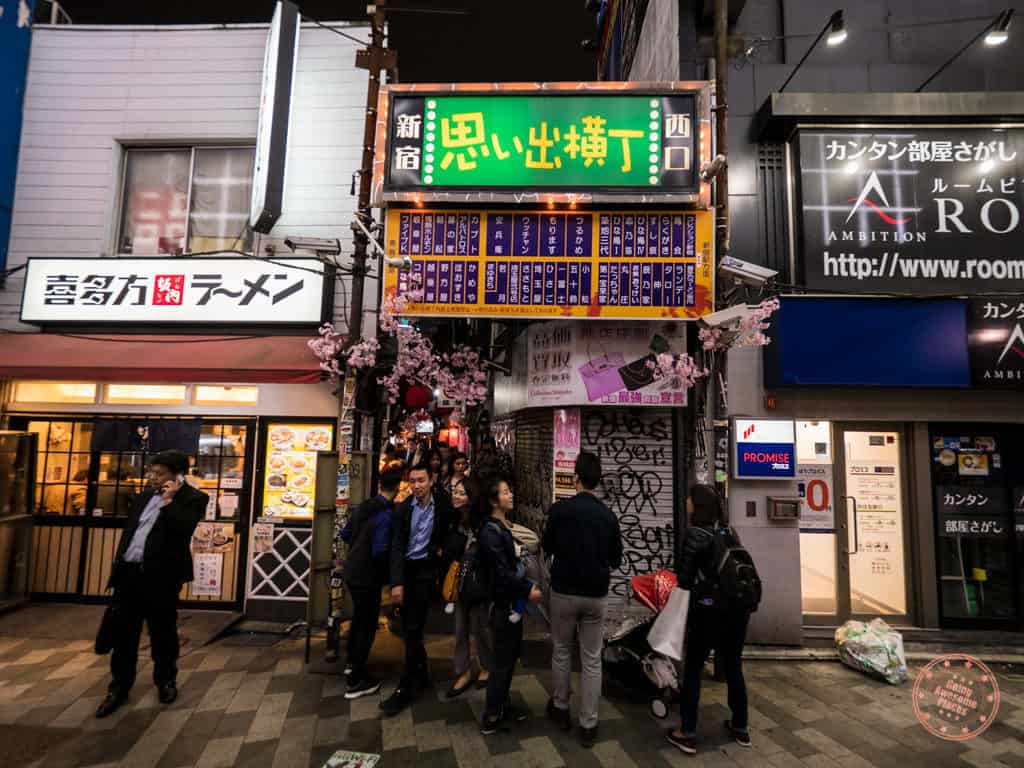
After visiting the Owl Cafe for a late breakfast, head towards Shinjuku. This is one of our favorite Tokyo neighborhoods for foodies because there are so many awesome restaurants and local food spots.
If you catch a metro to Shinjuku Station you’ll be spat out near Piss Alley, the local name for Omoide Yokocho. The narrow street gets its unfortunate nickname because it was a popular spot for men to relieve themselves after too many pints. But don’t worry, that’s not the case anymore.
Piss Alley has a local and authentic feel to it, and it’s more shabby and grotty than some of the foodie areas aimed at tourists. Along the narrow alleyway, you’ll find lots of tiny stalls where people huddle over the grill on tiny bar stools.
There’s always a strong smell of meat cooking on the fire in Piss Alley, and that was enough to get our appetite going the minute we arrived!
There’s not one specific restaurant you should look for along Omoide Yokocho. Most of the food stalls have a similar menu and the quality is great all around. It tends to come down to which restaurant has a place to sit when you’re there!
It’s a busy spot, so the stalls do tend to charge an unexpected small commission ‘sitting’ fee, which took us by surprise. Even so, the skewers and beer went down a treat and going to Piss Alley is a cultural experience in itself that no foodie should miss. You can find out more about our experience at Piss Alley in our Ultimate Tokyo Food Guide in Japan – Where and What To Eat.
Still got room for more delicious Japanese food? Then join this Golden Gai & Kabukicho Izakaya Experience in Shinjuku, which is perfect for anyone looking for a food tour in a neighborhood that is well known for its izakaya bars. You’ll get to try 4 different Japanese local dishes that everyone will love too. There’s also this Shinjuku local bar hopping and food tour if you’re not convinced by the first one, or this Shinjuku food tour where you’ll eat 13 different dishes!
WHAT YOU NEED TO KNOW
- Address: 1-chōme-2 Nishishinjuku, Shinjuku City, Tokyo 160-0023, Japan
- Hours: The alley comes to life later in the afternoon and evening.
- Price: We paid about $19 for beers and an assortment of skewers when we visited.
- Tips: To have the coolest experience there and see it in full swing, we suggest having a late breakfast at the Owl Cafe then killing a few hours wandering around Harajuku or joining a food tour then heading to Piss Alley later on.
- How to get there: From the Owl Cafe you can reach Piss Alley in 10 minutes. Hop on the Yamanote Line from Harajuku Station and hop off at Shinjuku Station, which is right by the lively alleyway.

It’s worth going on a walk around the Shinjuku neighborhood, which is pretty lively. If you want to find out about more of the neighborhood’s attractions, check out our Tokyo Neighborhood Guide – Where You Should Visit and Why.
Once you’re ready for dinner, make your way to Tokyo Station. When we were in Tokyo, we kept getting different tips about where to go for the ‘best’ ramen, so we figured it would be a good idea to go somewhere that had a cluster of different ramen restaurants in one place, so we could pick between a few.
That’s when we heard about Ramen Street. The place’s story began when 8 of the best and most famous Japanese ramen shops from around the country were asked to set up a shop on the street. Since then, it’s kept growing and growing.
Now, ramen is a serious thing in Japan. There are local customs and secret rules about how you should eat and order ramen. To help you get to grips with the etiquette, we wrote this How to Eat Ramen in Japan guide!
When we were there, we were lured into Rokurinsha because there was a sizable queue, which we figured meant the ramen was good! The restaurant is known for a special type of ramen called Tsukemen, where the soup and noodles are separate. The broth tends to be richer, and the noodles are thicker.
It was cool to try it, but we found the fishy flavor that comes from the gyofun dry fish powder pretty overpowering, so we’d recommend trying something else. You can find out more about Ramen Street on our Ultimate Tokyo Food Guide in Japan – Where and What to Eat guide!
WHAT YOU NEED TO KNOW
- Address: 1-9-1 Tokyo Station B1, Marunouchi, Chiyoda 100-0005 Tokyo Prefecture
- Hours: The ramen shops are open from 11 AM to 10 PM daily.
- Price: We paid about $10 for the Special Dip Noodles and $8 for the Special Ramen dish.
- Tips: If you stay at our selected hotel, you’ll be able to walk home after you’ve filled up at Ramen Street! It’s a 25-minute walk away.
- Getting There: It takes 40 minutes on the Yamanote Line from Shinjuku Station right by Piss Alley to reach Tokyo Station.
Day 3 Summary
What you’ll see and do:
- Visit the Meiji Shrine.
- Join a cool food tour in Harajuku that takes you to one of the neighborhood’s one-of-a-kind animal cafes!
- Eat at two of the city’s best food spots, Piss Alley and Ramen Street.
Where you’ll eat:
- Breakfast: Stop for breakfast at the unique Harajuku Owl Cafe by Meiji Shrine. You’ll get to feed the owls with the help of the staff. We also loved how all their coffee mugs were owl-themed! They have lots of breakfast options like waffles and pancakes.
- Lunch: Head to Piss Alley later in the day and fill up on skewers and beer at the notorious Piss Alley. It’s not the cheapest street food in town, but it’s worth it for the experience.
- Dinner: Pick a ramen restaurant along Ramen Street!
Where you’ll stay:
- We love The Royal Park Hotel in Ginza. After searching for all the best hotels in each neighborhood of Tokyo we settled on this hotel for your food-inspired trip to Tokyo. It is in between most of Tokyo’s other awesome neighborhoods and is a convenient neighborhood to travel back and forth from, as it’s where the city’s biggest station is, Tokyo Station.
Map Of Tokyo
We’ve made this super handy interactive map with all the restaurants, hotels, and attractions for your trip pinned for you! Download it ahead of time for hassle-free navigation around the city:
What You Should Know About Tokyo
It’s hard to believe that Tokyo started as a small fishing village called Edo! Historically, Kyoto was the capital of the country, and it wasn’t until 1603 that Tokyo became the capital of Japan.
The city’s name was changed from Edo to Tokyo, which translates to ‘eastern capital’. It’s now one of the largest cities in the world, alive with an electric buzz and bright neon billboards.
Tokyo is located along Tokyo Bay on Japan’s biggest island, Honshu. Because it’s so close to the ocean, it’s renowned for its fresh seafood, which is used in dishes like sushi and ramen!
Tokyo Packing Guide
Here’s a handy packing list to keep in mind for this awesome cityscape holiday:
- Comfortable shoes: Avoid having your holiday time ruined by blisters and bring some comfy trainers to wear while you’re exploring!
- Pack a raincoat: You aren’t guaranteed good weather in the winter and autumn months, but even in spring, you can be surprised by the occasional shower, so pack a raincoat just in case! Remember that October and November are especially drizzly in Tokyo.
- Bring your best camera so you can capture timeless memories of your time in Japan! You might want to think about packing other accessories like selfie sticks, so you can take food envy selfies in Tokyo’s best food spots. If you want to capture awesome reflection-free photographs, you should also invest in one of these lens hoods.
- Remember to pack a travel adapter: You’ll need a two-pronged Type A for Japan, so check your plugs to see if you need to get an adapter ahead of your trip.
- Get some Japanese Yen ready before your trip. Japan is still very much a cash-based country. Food stalls in particular prefer cash.
- Check that you can use your credit or debit card to take out Japanese Yen while you’re abroad without being charged hefty fees! If not, plan and bring all the travel money you think you’ll need. In our 10 day Japan itinerary, we estimated it costs about $147 per person per day to travel in Japan.
- Check if you need a Visa ahead of your trip! Most countries don’t need a Visa for a short holiday in Japan, but make sure you check the requirements for your country so you don’t run into any unexpected problems. You can find out more on the Ministry of Foreign Affairs of Japan website.
- Bring hand sanitizer: It’s not unusual for there to be no soap in public and restaurant toilets in Japan.
- Get some metal chopsticks: That way, you can reduce the amount of waste and make your trip a little eco-friendlier.
Eat Your Way Through Japan’s Capital On This Epic Foodie Getaway
This epic Tokyo itinerary for food lovers will take you to all our favorite food spots. You’ll get to dine at restaurants along the coolest foodie streets in the city, like Nakamise Street and Piss Alley.
A definite highlight of the trip is watching the tuna auctions at Toyosu Market, then feasting on peculiar seafood dishes in the outer market at Tsukiji Market! We’ve also included loads of unique food tours where you’ll get to learn more about Japan’s second-to-none food culture.
Tokyo Frequently Asked Questions
How much does a meal cost in Japan?
It’s no secret that Tokyo is an expensive city, and food is pricey too. On one of our Japan trips, we kept track of our expenses over 6 days in the city, and overall, we spent $437 on food.
In the end, eating out was our biggest expense, but like any food lover will know, it’s worth it! You can check out exactly what we ate on our Ultimate Tokyo Food Guide in Japan – Where and What to Eat.
Japan has loads of new flavors to try, and their traditional dishes are some of my favorites. You can’t beat great sushi or a fresh sashimi bowl. It’s hard to give an estimate for how much a single meal costs in Japan because it depends on whether you’re eating street food, dining at fancy restaurants, or keeping your costs low by doing your own cooking.
Based on how much we spent on food over 6 days for two people, I’d guess each meal came to about $12 per meal per person. Remember, we were eating at more budget-friendly places because we wanted to keep our costs down, so you could easily spend more.
How much money do you need per day in Tokyo?
Like any destination, how much you spend in Japan will depend on where you eat, the cost of the hotel you pick, and how much you want to do while you’re there. If you’re eating wagyu beef and going on tours every day, your holiday cost will quickly add up!
To give you a rough idea, in our 10 Day Japan Itinerary For First Timers we costed out our trip to Japan and averaged $147 per person, per day. It’s worth considering that this might get more expensive if you’re visiting in the peak season (spring and autumn), as hotel and flight costs can go up.
What is Japan’s comfort food?
If you’re looking for comfort food, you can’t compete with a hot broth with noodles. Ramen is a cozy favorite that will warm your belly and soul. There are loads of flavors like soy sauce and miso to choose from, and there are lots of toppings, including sliced pork, nori, menma (seasoned bamboo shoots), and scallions that you can add to your delicious broth!
Another popular comfort food is okonomiyaki. These Japanese pancakes are a savory classic. They’re made with wheat flour batter mixed with other ingredients that get fried up on a teppan. Usually, they’re topped with cabbage, meat, seafood, and a flavor-packed sauce – yum!
Where do locals eat in Tokyo?
Some of the well-known spots in this guide are also local favorites! While not many locals will go out of their way to get to Toyosu Market and pay the higher prices to eat at the very tasty, but out of the way, sushi spots there are lots of locals who do eat at the food stalls in the outer market of Tsukiji Market.
Piss Alley is another popular spot amongst locals and Ramen Street near Tokyo Station is another foodie hotspot you can’t miss!
Japan Trip Planning Essentials And Discounts
If you’re in the middle of booking your trip to Japan, here are the most important places you need to go to book:
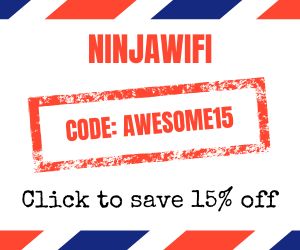
- JR Pass – The two most reliable places we always check are JRailPass and JRPass. If you are taking long distance Shinkansen across multiple region, get the full JR Pass. If you’re focusing on one specific area, you only need a JR regional pass. The official booking platform is Smart-Ex.
- Shinkansen – The JR Pass prices have gone up and for many of you, it’ll make more sense to book tickets individually. The secret is that when you buy your Shinkansen tickets through Klook offers special vouchers for Don Quijote and BIC when booking. Their tickets are super easy to redeem as well. Right now, use code SKS10OFF to save $10 USD off.
- Hotels/Ryokans – In Japan, the best website for accommodations, hands down is Agoda. When we’ve compared them against Booking, Agoda consistently came out cheaper.
- Tours – While Viator and GetYourGuide are our go-to’s, Klook and KKDay are much popular in Asia so it’s always worth comparing across all of them to make sure you get the best price. With Klook, use code GOINGAWESOMEPLACES to save up to 10% on your first booking.
- Pocket Wifi – While we do love eSIMs, having a pocket wifi is great for sharing data with a large group. The most popular is NinjaWifi which is easy to pick up at the airport. Use code AWESOME15 to save 15% (automatically applied). Alternatives are offered by JRPass and JRailPass but they aren’t as cheap. For a more global solution, consider Solis and PokeFi.
- eSIM – The best one is Airalo. Save money by getting the Japan region eSIM and use referral code WILLIA9500 to get $3 USD credit on your first purchase. From now to Feb 29, the 10GB package is half price as well! Ubigi is another one that we’ve had success with where they uniquely offer 5G coverage. Use code AWESOME10 to save 10% on your first order.
- Car Rental – Big companies like Budget, Avis, and Enterprise operate in Japan but they’re usually the most expensive. The best companies are the local Japanese ones such as Toyota Rentacar, Nippon Rentacar, Orix Rentacar, Nissan Rentacar, and Times Car Rental. To make things easier, use Rentalcars and Klook to compare prices all in one place. Don’t forget, you need an IDP to drive in Japan so get one before you leave your home country.
- Learn Japanese – It helps to know even a bit of the language before you go. Start your learning with Rosetta Stone Japanese.
- Cash or credit – Cash is still very important to have in Japan but when you use credit cards, make sure you’re not getting charged those extra exchange rate fees. The best card right now is the Wise Multi-Currency Card which is actually a debit card where you can convert at favorable rates beforehand. This cuts out any sneaky transaction fees.
- Travel Insurance – Make sure you’re covered in case something happens. Get quotes from HeyMondo where booking through our link gets you 15% off automatically and if you’re from Canada, get quotes from RATESDOTCA.
- Shopping – Discovering Don Quijote is a quintessential part of the Japan experience. The secret for tax-free shopping is that they have a coupon that can help you save 10% off + additional 5% off if you spend ¥10,000 or more.




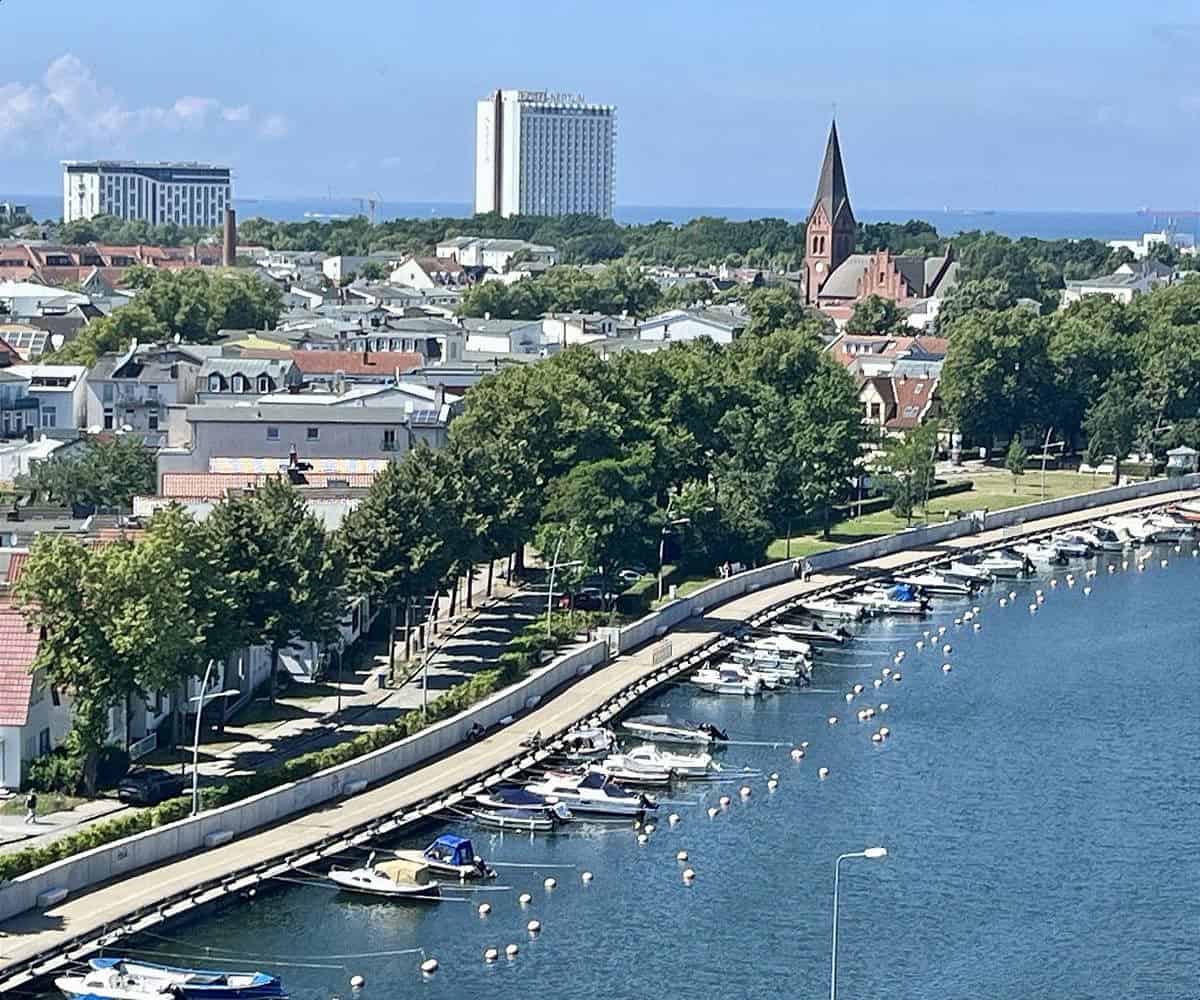





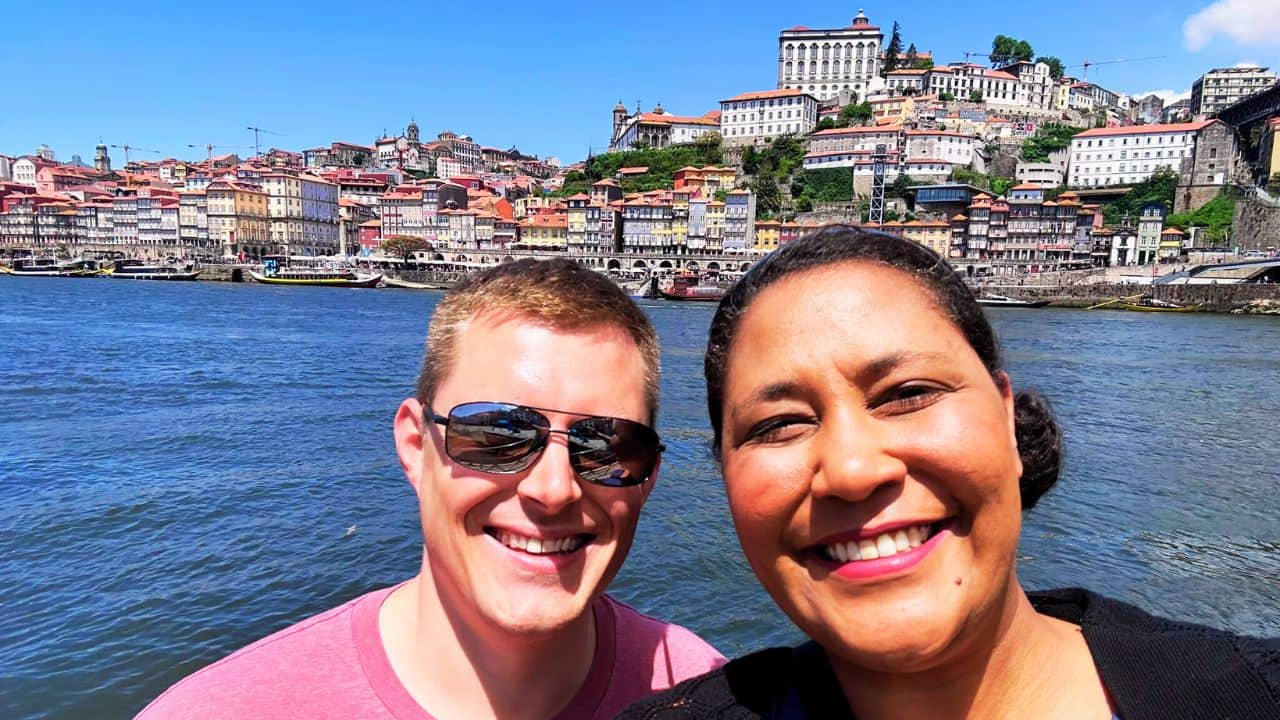

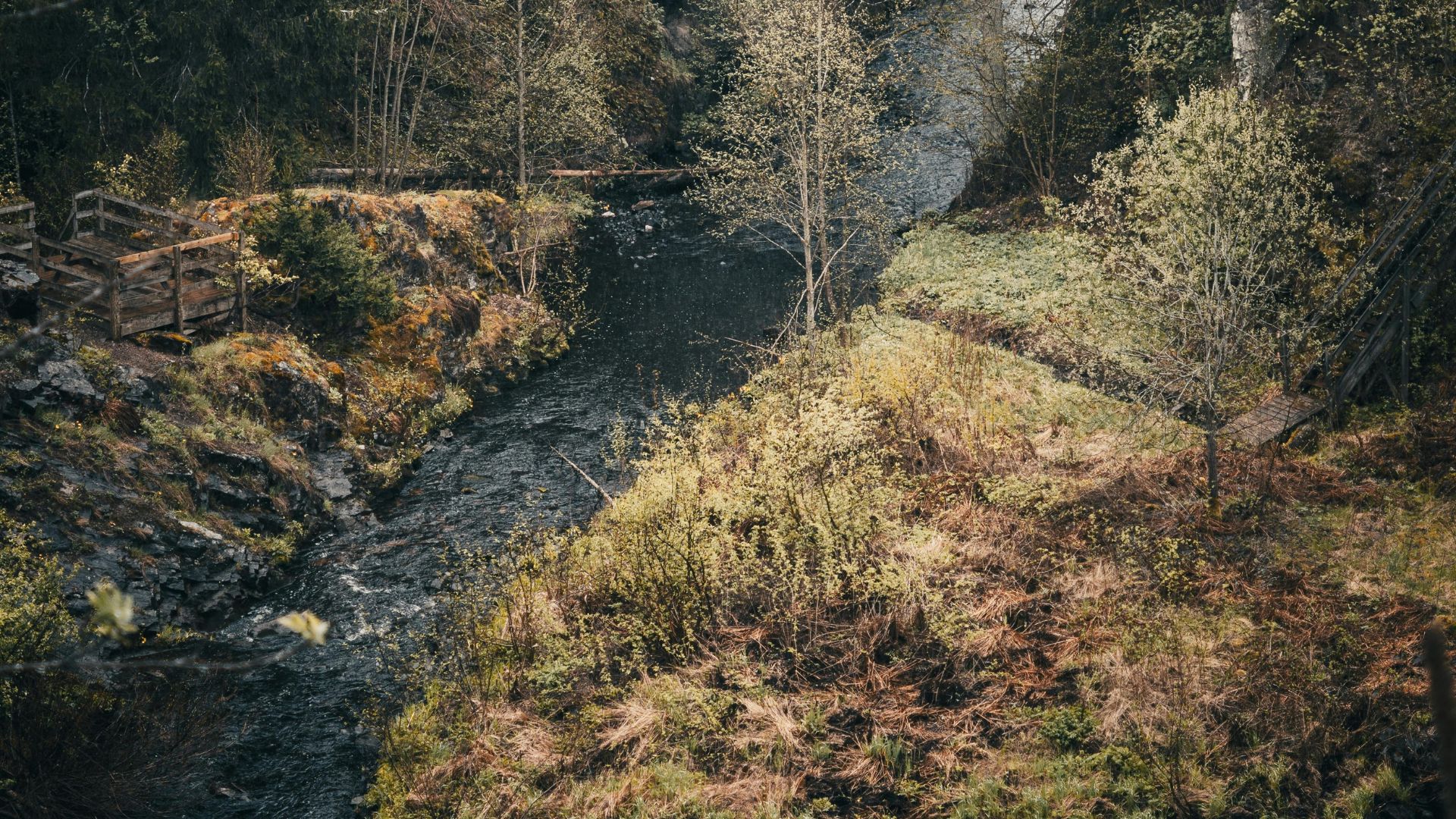
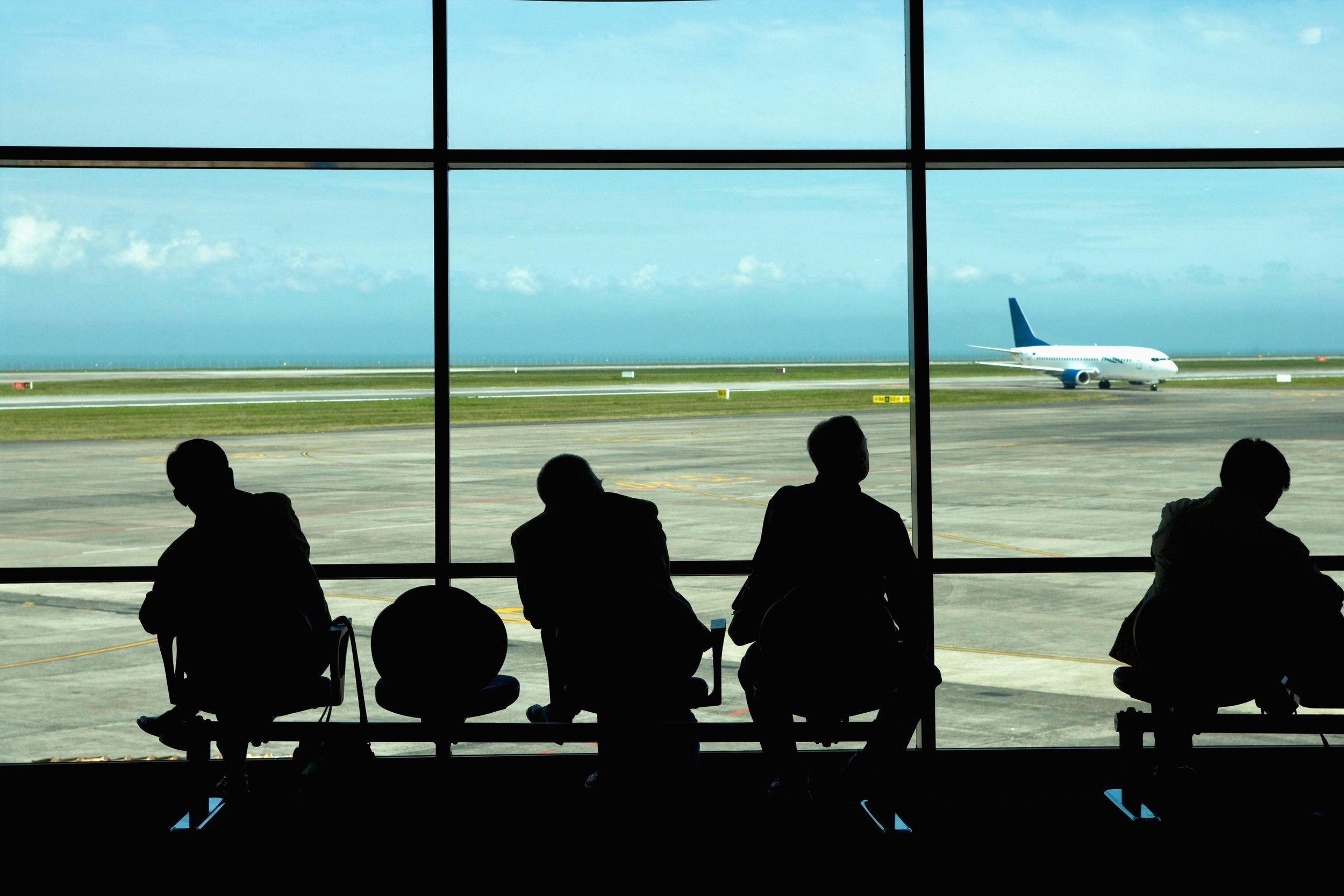
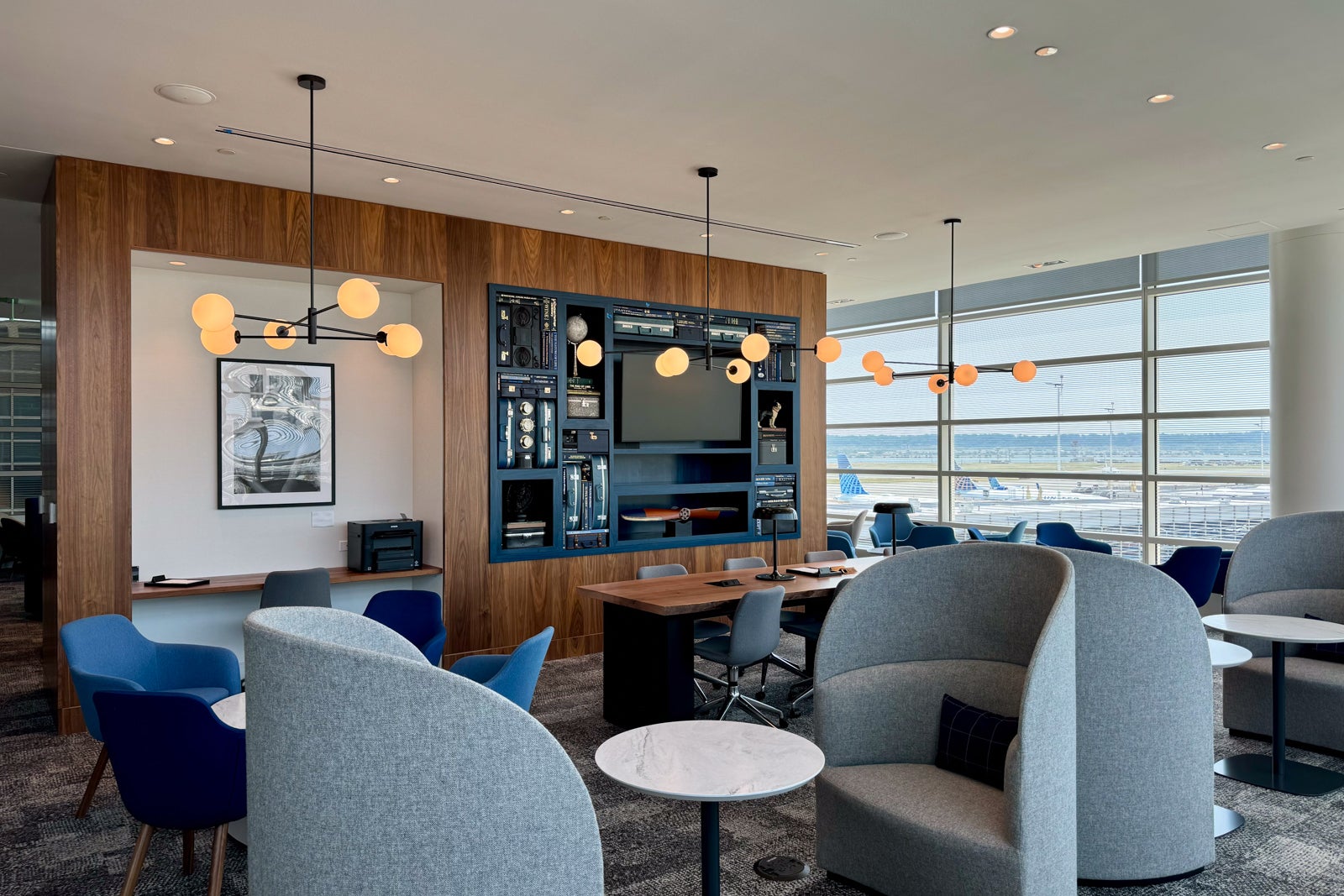
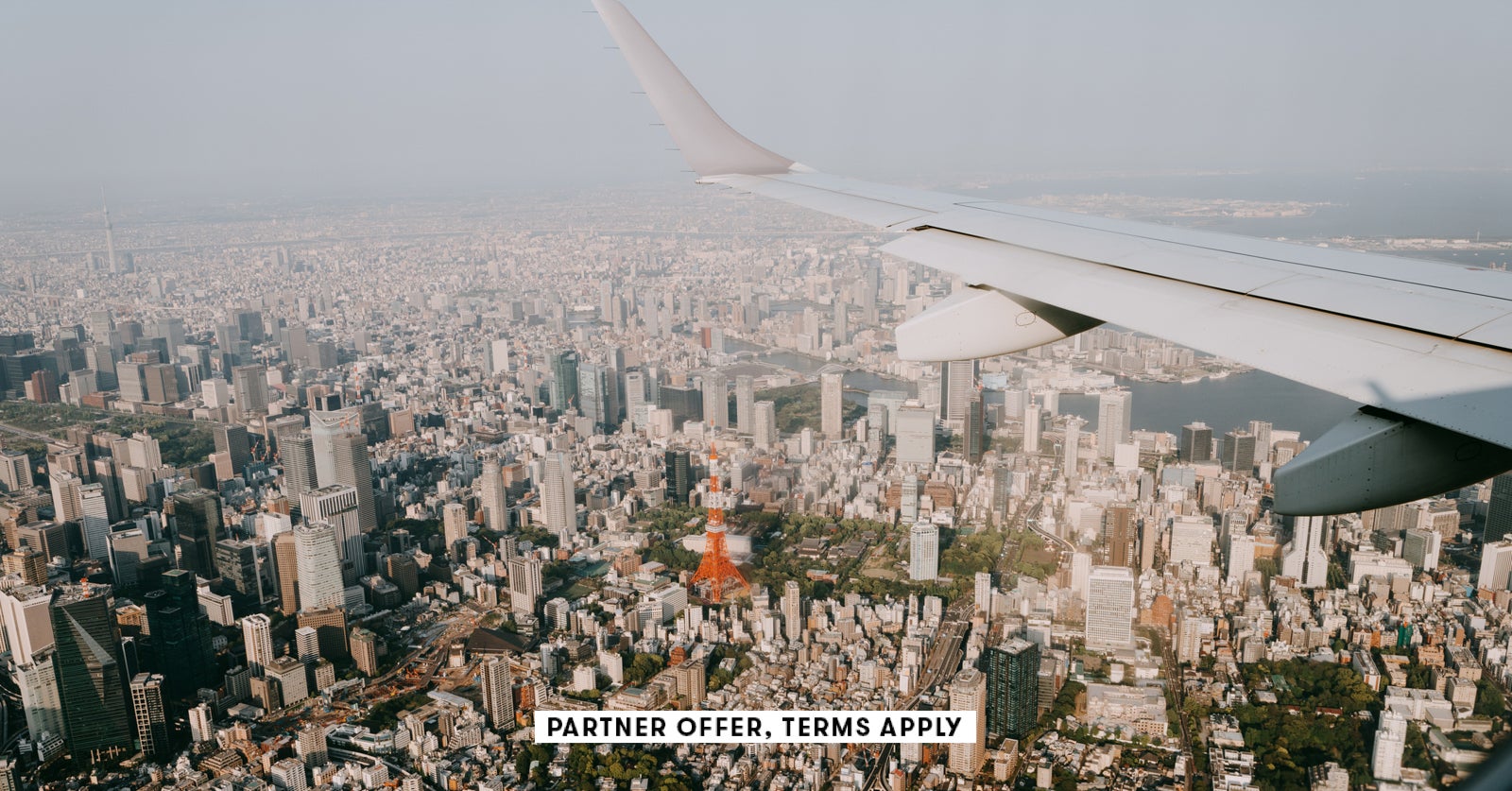

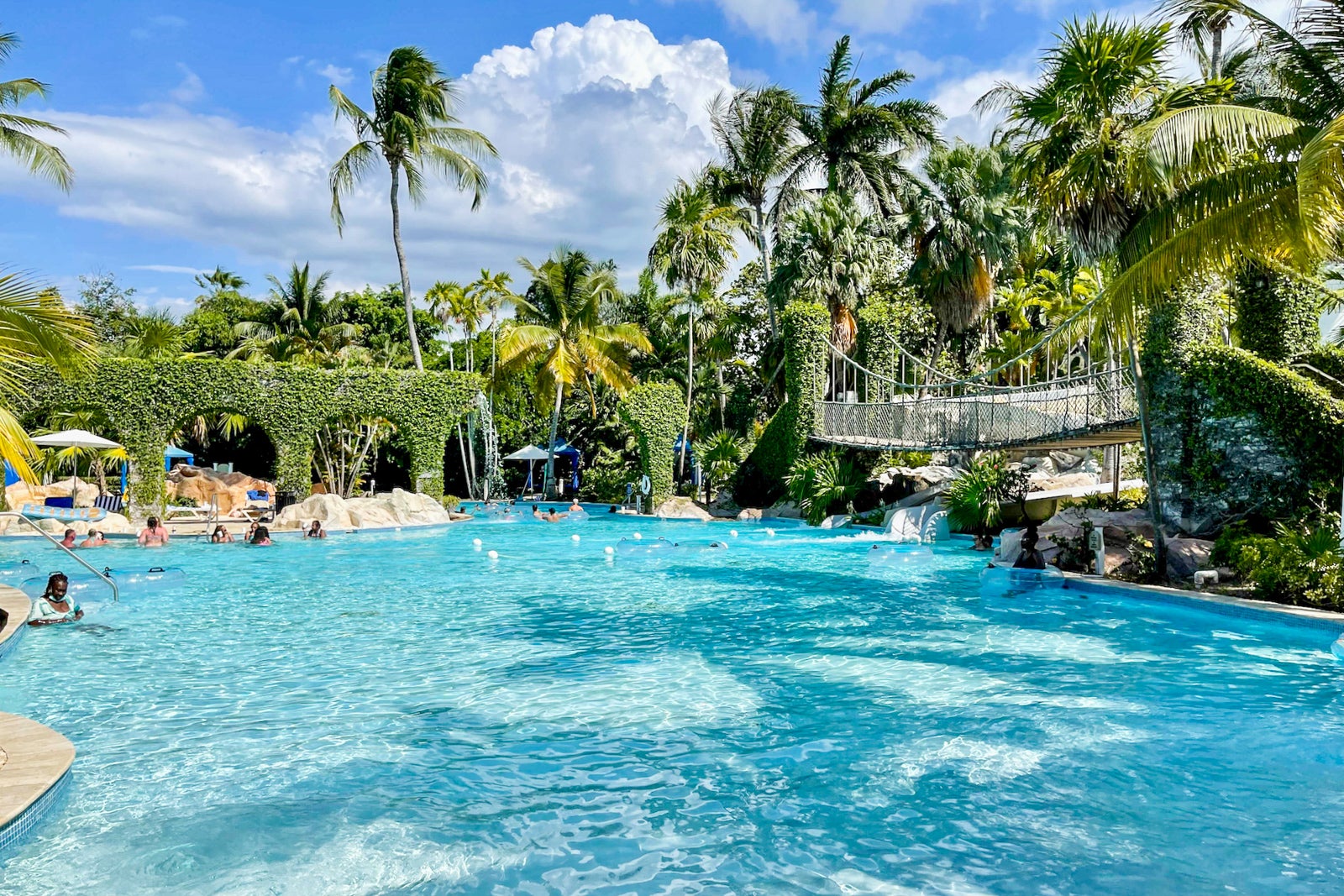

 English (US) ·
English (US) ·